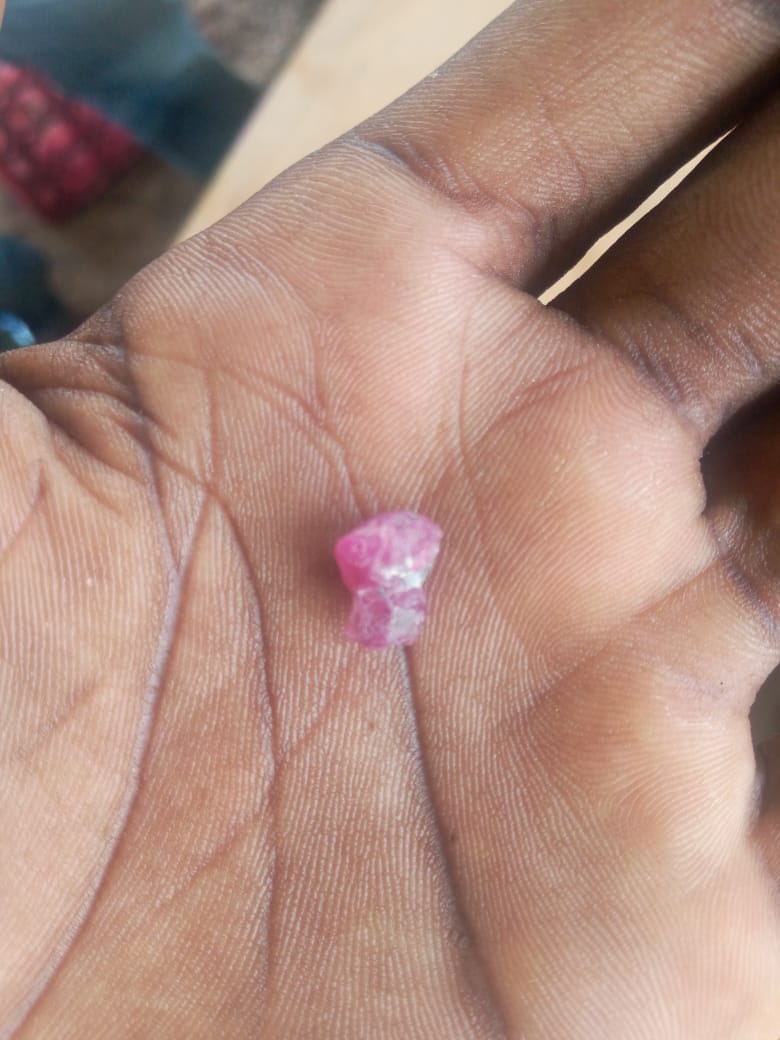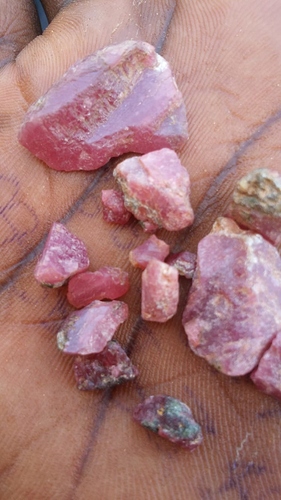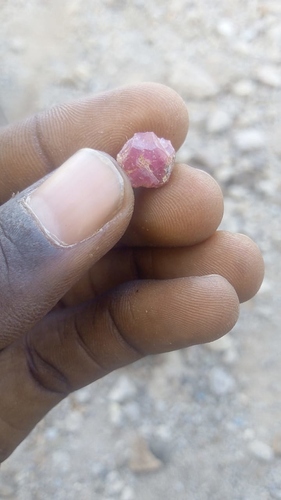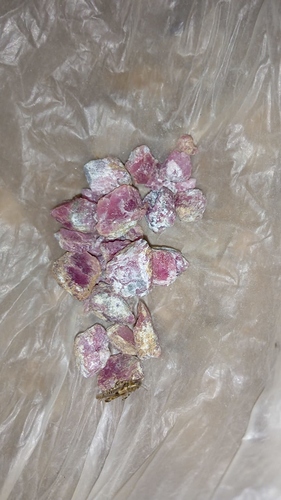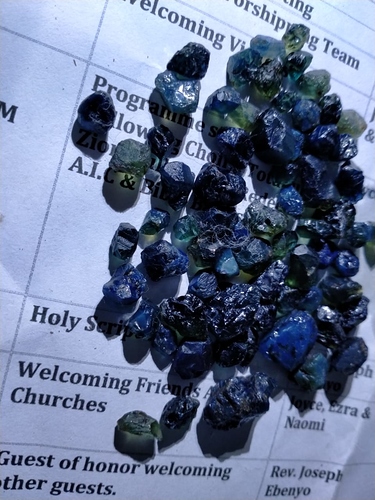This is my first time posting here. I work in energy and development in east Africa, and recently have been helping some friends with a ruby site they have in far northern Kenya. It is a totally new deposit, I’m trying to help them figure out how best to develop and market the resource. So far, most of the stones seem low grade, but I can’t really tell what the difference between industrial grade, carving grade, cabochon grade and facet grade ruby is just from photos and before heating or any kind of enhancement. Right now I’m trying to get them to build one of the traditional charcoal heating braziers to see if the color can be improved with simple low heat, as COVID makes it impossible to take them to Thailand for a heating test and proper lab work. Can someone who has experience looking at ruby rough give me their thoughts?
With the color shown in the gems pictured, maybe angle more toward describing it as a “pink sapphire” instead of ruby?
Is there a definitive test to tell what the dividing line would be? Spectrogram or just better practice to use pink sapphire if it’s not clearly red?
Regrettably there is no test. It is all subjective in the observer’s eye.
I agree with Mdsandifer, those are best described as pink sapphire. There is still value in pink sapphire, maybe not as much as ruby, but still value in them.
All the best with your venture.
Otter
ps. Keep us in the loop how things turn out.
Traditionally, a glowing “pink to red” corundum under UV is named ruby. If you don’t have a lamp, try under a night club’s black light.
The quality that you show is low. I’m unsure of the result after simple heating.
Good luck !
Hi you have some low grade cabochon quality and maybe some pieces can be better than others it’s not easy to find Hi grade ruby in good size continue working if you find a lot of ruby maybe some will be good facet grade.
There is a simple method I use for checking sapphires out of the sieve using a torch, a mirror and some water. Wet the stones and place them on the mirror, shine the torch onto the stones positioning it in front of you so you are looking at the reflection of the stone. If a reflection shows colour, you have a stone with some clarity, put it aside and check with a magnifier later.
With Sapphires I can spread out several hundred and pick the possible cutters in a matter of minutes, if you don’t see colour in the reflection the stone is probably a dud. Remember if you select 0.5 - 1% of the stones, you’re probably doing well!
Hi,
I lived in Kenya for a few years and mined in Northern Kenya… and used to buy rough from other areas in Kenya. a lot of the stone coming from there has fantastic colour but clarity is the big issue (and cracking, impatience in getting to the stones)! Most of the stones are sadly not facet grade… you may get one or two but a great deal are cab quality and even more are fish tank material. There is one place in Kenya that produces very good quality ruby but you need to be very brave to go there as there is always unrest. There are some very good gems in Kenya the trouble is it is hard to get them sadly there is still a lot of corruption there and most locals look online see a ruby or other gem for sale retail that is top quality and assume their rough is worth the same.
Thanks a lot for this perspective. Wondering which area you’re referring to - I know there is ruby in West Pokot (somewhat unstable). This deposit is near the Ethiopian border, so it’s unstable but not directly inside the conflict zone. I am supporting some people who are mining directly, not buying rough. I have bought some blue sapphire there and was pretty happy with the prices, haven’t cut it yet but I’m expecting somewhat of a mixed bag. I’ve seen some incredible stuff but yeah the prices tend to be unworkable for that. The key is working directly with the mining groups as they are looking for wholesale volume sales not this individual stone speculation. We are expecting to have several KG of material from this upcoming expedition, I will be surprised if there’s more than 50g that is facet grade. Even still, at high volume cabochon grade material could still be interesting.
Know West Pokot very well in fact I believe I am the only mzungu to be given a Pokot name. The area you talk of near the Ethiopian border I am also aware of… used to buy sapphire there and you do occasionally get a nice piece or two. I have worked with groups in fact still get requests to but they are not unfortunately reliable or for that matter overly transparent. So I now look at other places to source my rough. I do believe though that there is some very good material there, have seen one or two pieces myself.
Amazing! This is the sapphire parcel I just bought in Lokichoggio. Already had the authenticity verified in Nairobi but haven’t treated or cut it yet. Mostly >1g pieces, 61g in total. I think it will be about 50/50 facetable vs cab grade (unfortunately looks like the cabs may be the larger pieces). I’ve seen some absolutely spectacular saturated blue pieces from other parcels but this was the first one I got acceptable pricing on. It definitely helps having long term relationships and running operations there outside of just gem buying.
More than likely from Emmanuel? Yes typical Turkana sapphire a small piece of advice I only cut untreated they don’t heat very well for one and the market prefers them untreated.
Oh and do not cut them there get them cut by a skilled cutter in somewhere like Sri Lanka.
Thanks for the info on heating, that’s super helpful. It’s not this Emmanuel person, my guys don’t know him. I’m going to try a couple cutters there, I would rather not send them to Sri Lanka or Thailand if I can avoid it. But if the quality is low it’s unavoidable.
You will not sell them in Europe with native cut… my email is viaemiliajewellery@gmail.com
